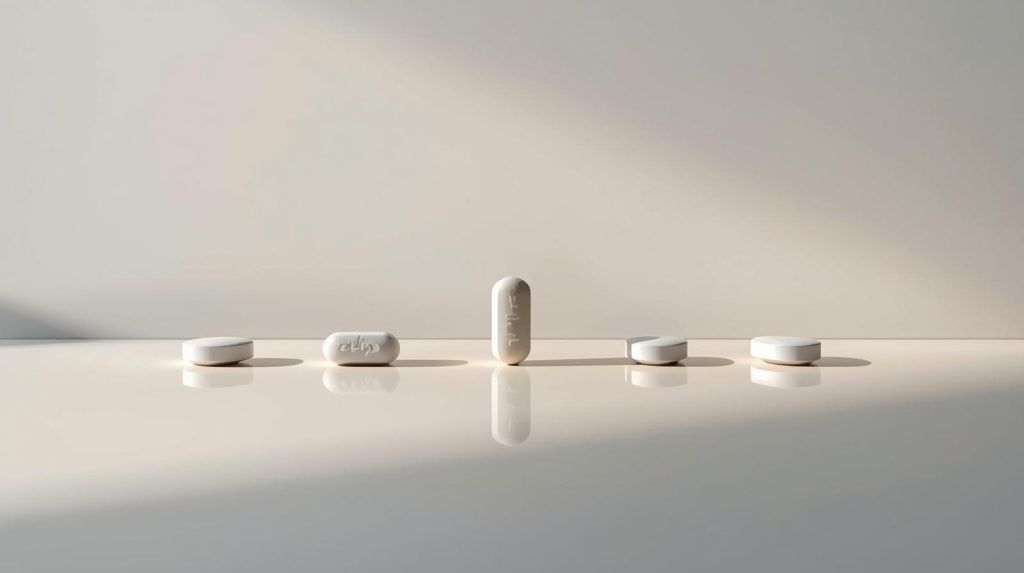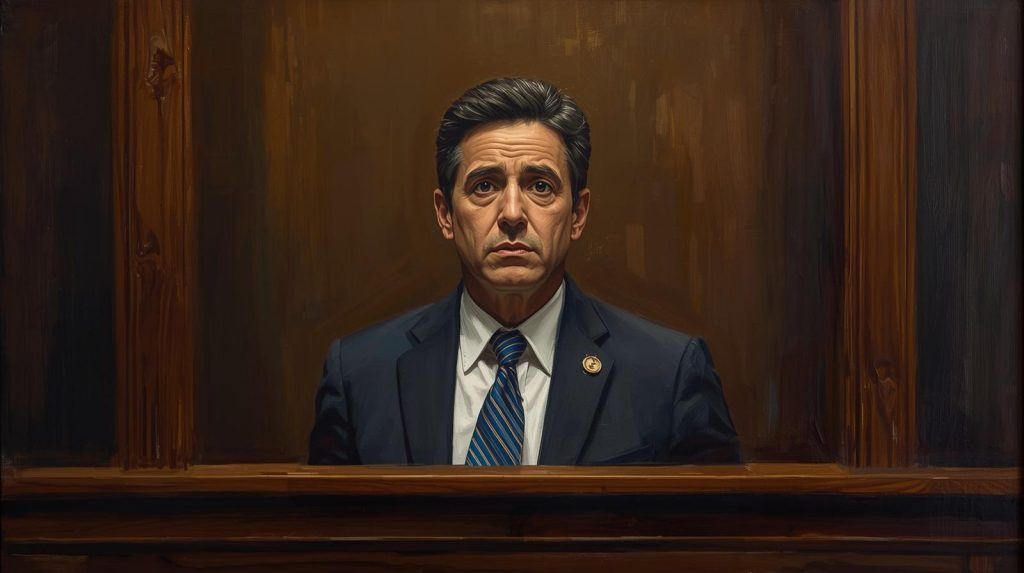Last year, my acquisition of one of the last “old” Defenders spawned an article on JLR’s attempt to stop manufacture of the “same-same but different” Ineos Grenadier. A year later, the Grenadier is in the testing and development stage having completed extreme cold testing in Arjeplog, Sweden and high-altitude testing in the Austrian Alps. JLR is embroiled in another IP dispute, this time in the US involving patents for its terrain response system. Meanwhile, my wife has refused to take any family trips in our Defender because “it drives like a tractor and the suspension is bruising our baby’s brain” so an air suspension conversion is looking to be necessary. This article is about the patents, not the air bag conversion.
JLR initially took action against Bentley Motors Ltd (Bentley) for breach of its US Patent No 7,349,776 “Vehicle Control”. The ‘776 patent relates to co-ordinated control of a number of sub-systems of a vehicle in different modes, so as to suit different conditions. In layperson’s terms, it protects the technology behind the dial in the centre console which allows a driver to select between general, grass/gravel/snow, mud and ruts, sand, and rock crawl settings. Doing so optimises the ABS, throttle, transmission, diff locks, and air suspension to suit the terrain selected by the driver. This “Terrain Response” system was introduced in 2005 and, according to JLR, offered an unprecedented level of control in off-road vehicles at the time.
Launched in 2016, the Bentayga started life as an EXP 9 F concept which debuted at the 2012 Geneva Auto Show and was described by one magazine as “a Continental GT on stilts”. In fact, it was so universally disliked that it is rumoured Bentley began an exterior redesign mere weeks after the show. The finished product remains polarising and, despite being one of the world’s fastest and most expensive SUV’s, will probably never appear on this writer’s (incredibly long) list of desirable vehicles.
Like many other vehicles, the Bentayga offers a number of on-road driving modes (comfort, sport, custom and “Bentley”1). However, and to JLR’s chagrin, the Bentayga includes an optional “Drive Dynamics” system which, like JLR’s “Terrain Response”, optimises multiple systems to suit a host of off road conditions2, using a rotary dial.
JLR put Bentley on notice of its rights in 2016 but Bentley declined to pay a royalty or to discontinue what it perceived to be a common-place feature of off-road vehicles. JLR’s response was to reissue its ‘776 patent with more detail directed to the features used by Bentley, then to sue Bentley for breach in June 2018.
The re-issued patent
The reissued patent (RE 46,828) operates as follows: “the control of a number of the vehicle subsystems is coordinated by a central vehicle controller, which can be switched between a number of modes thereby controlling all of the subsystems in a coordinated way which is simple for the driver to control.”
According to JLR, prior art systems did not provide the driver with direct input regarding the surface terrain so as to better select the appropriate mode, making the system patentable. The U.S. District Court for the Eastern District of Virginia agreed, denying Bentley’s Motion to Dismiss the infringement proceedings initiated by JLR against it.
Bentley’s motion to dismiss
The question for the Federal Circuit was whether the inventive concept in the ‘828 patent was merely performing a function (and fell into the non-registrable abstract-idea category) or described “a particular way of performing that function.” In the US, claims that improve the functioning of a computer generally fall in the latter (registrable) category.
JLR argued that the claims were directed to an improvement in computer functionality because the technology permits the simultaneous manipulation of multiple vehicle subsystems. According to JLR, before the ‘828 patent drivers had to know the right configurations of subsystems when driving off-road on particular driving surfaces, had to manually change those subsystems one at a time, and could only adjust a limited number at one time. According to JLR, the ‘828 patent improves vehicle control technology by permitting a driver to control multiple subsystems at once and provides pre-set configurations of various subsystems for particular surfaces.
On the other hand, Bentley said the claims simply computerise what drivers already do in their mind — for example, by slowing down while going downhill.
Construing the pleadings most favourably to JLR, the Federal Circuit found that the claims are not directed to an abstract concept since the claims describe manipulating multiple vehicle subsystems to allow a vehicle to better adapt to driving on various types of on-road and off-road surfaces. The Court found that the most analogous technology to that embodied in the ‘828 patent is cruise control technology, which commonly exists in vehicles, and which other courts have ruled is patentable and not an abstract idea.
It is likely that the New Zealand and Australian courts would have found similarly. In both jurisdictions the key consideration for patentability is whether there is a new “manner of manufacture” which the High Court of Australia in National Research Development Corp v Commissioner of Patents (1959) 102 CLR 252 confirmed simply means that a claimed product or process must result in an artificially created state of affairs that offers a material advantage in the field of economic endeavour. An artificially created state of affairs should be understood in the sense of a concrete, tangible, physical, or observable effect3 so that the product or process offers a material advantage in the sense that it belongs to a useful art as distinct from a fine art.4
In New Zealand, computer programmes “as such” are excluded from patentability, but using a computer to modify the way in which tangible machinery operates will generally be patentable, provided the method is novel and non-obvious.
PTAB proceedings
Undeterred, in 2019 Bentley filed two petitions with the Patent Trial and Appeal Board (PTAB) to negate the claims in the ‘828 patent being asserted against it by JLR. Bentley referenced the Mitsubishi Lancer Evolution VII, Hummer H2, and Porsche 959 as three “obvious” examples of cars with selectable on- and off-road modes which had been sold before the filing date of JLR’s patent. In August 2019, the Board denied both of Bentley’s petitions and in March and October 2020 it denied Bentley’s request for a rehearing.
JLR casts the net wider
Not one to shy away from a fight, in July 2018 JLR had also sent letters before action to Audi and Lamborghini regarding the “ANIMA” system on the Lamborghini Urus and “Audi Drive Select” on the Q5, Q7, and e-tron.
In November 2020, (and perhaps buoyed by its success before the Federal Circuit and in the PTAB) JLR filed four more lawsuits against Volkswagen Group of America, Porsche Cars North America, Audi of America, and Automobili Lamborghini America for patent infringement. On the same day, JLR also filed a request to the U.S. International Trade Commission (USITC) to ban imports of the Bentayga, Uris, Cayenne, Q5, Q7, Q8, Tiguan, and e-tron
The USITC is empowered by s.337 of the Tariff Act 1930 to determine whether there is unfair competition in the importation of products into, or their subsequent sale in, the United States. According to s.337 the infringement of a US patent, copyright, or registered trade mark, is an unlawful practice in import trade. Most s.337 investigations involve allegations of patent or registered trade mark infringement but other forms of unfair competition, such as misappropriation of trade secrets, trade dress infringement, passing off, false advertising, and violations of antitrust laws, may also be asserted.
USITC orders are effective when issued and become final 60 days after issuance, unless disapproved for policy reasons by the U.S. Trade Representative within that 60-day period. Appeals of USITC determinations may be taken to the U.S. Court of Appeals for the Federal Circuit. Violators of USITC s.337 orders are liable for fines of up to $100,000 a day or twice the value of the imported articles. So the stakes have now become pretty high for the manufacturers against which the USITC request for investigation has been filed.
How was JLR able to improve its position?
A reissue application can be filed in the United States to correct an error in a patent where, as a result of the error, the patent is wholly or partly inoperative or invalid. There must be at least one error in the patent to provide grounds for reissue of the patent. If there is no error the patent will not be reissued. However, in accordance with 35 U.S.C. 251, the error upon which a reissue is based can be one which causes the patent to be “deemed wholly or partly inoperative or invalid by reason… of the patentee claiming more or less than he [sic] had a right to claim in the patent.”
According to the USPTO’s website:
“The reissue error may be directed solely to the failure to previously present narrower claims, which are being added by reissue. In re Tanaka, 640 F.3d 1246, 1251, 98 USPQ2d 1331, 1334 (Fed. Cir. 2011) provides that “the omission of a narrower claim from a patent can render a patent partly inoperative by failing to protect the disclosed invention to the full extent allowed by law.” This permits submission of additional claims that are narrower in scope than the pre-existing patent claims, without any narrowing of the pre-existing patent claims.”
Claim 1 of the ‘776 patent read:
“A vehicle control system having a driver input for selecting a driving surface, the vehicle control system arranged to control a plurality of vehicle subsystems each of which is operable in a plurality of subsystem configuration modes, wherein the vehicle control system is operable in a plurality of driving modes in each of which it is arranged to select the subsystem configuration modes in a manner suitable for a respective driving surface.”
The ‘776 patent had a flaw in that it described how the various driving modes worked but didn’t frame them in terms of driver benefit—that a driver would have “direct input regarding the surface terrain.”5
Claim 21 of the ‘828 patent now reads (our emphasis):
“A vehicle control system having a driver input device for selecting a driving surface, the vehicle control system arranged to control a plurality of vehicle subsystems each of which is operable in a plurality of subsystem configuration modes, wherein the vehicle control system is operable in a plurality of driving modes in each of which it is arranged to select the subsystem configuration modes in a manner suitable for a respective driving surface, and further wherein the plurality of driving modes includes at least two off-road modes in which the subsystem configurations are controlled in a manner suitable for driving on respective off-road driving surfaces, and an on-road mode in which the subsystem configurations are controlled in a manner suitable for driving on-road and still further wherein one of the off-road modes is a sand mode in which the vehicle subsystems are controlled in a manner suitable for driving on sand.”
Thus, the claims of the ‘828 patent are now directed to a vehicle control system that can be operated by the driver to select from an on-road mode and at least two off road modes in which the sub-system configurations are controlled in a manner suitable for driving on the selected driving surface. In the case of claim 21, one of those off-road modes is a sand mode in which, as the ‘828 patent explains, the build-up of sand in front of the wheels under braking can improve braking performance. In this mode, low wheel spin at low speeds prevents the wheel from digging into the sand but high wheel spin at high speeds is less of a problem and can even improve traction and so is permitted. Other claims are now targeted at driving on gravel, and on snow and grass, the order of selection of driving modes via a selector, adjustment of throttle response between modes, adjustment of suspension height between modes etc.
In New Zealand, s.83 of the Patents Act 2013 permits a patent specification to be amended after the patent application has been accepted. However, unless the amendment is for the purpose of correcting an obvious mistake it must not:
- Introduce new material or subject matter to the patent specification; or
- Broaden the scope of the patent so as to claim or describe matter which is not already disclosed.
Likewise, under s.104 Patents Act 1990 (Cth) an Australian patent can be amended to remove a lawful ground of objection or to correct a clerical error or obvious mistake. However, the amendment must not “claim or disclose matter which extends beyond” the original disclosure.
The key consideration in both jurisdictions is whether the amendment presents the notional skilled addressee with new information about the invention which is not directly and unambiguously apparent from the original disclosure.6 An approach advocated by IP Australia is to ask whether the person skilled in the art would, on looking at the specification as proposed to be amended, learn anything about the invention which they could not learn explicitly or implicitly from the complete specification.7
The New Zealand and Australian patent rules are less prescriptive than the United States when it comes to amending patents after acceptance in that it is not necessary to demonstrate an error which renders the patent wholly or partially inoperative.
In New Zealand and Australia it is normally permissible (as JLR did) to add a limiting feature to a claim so as to exclude (or disclaim) subject matter. The only exception is where the resulting claim is fundamentally different from that disclosed in the specification.8 Particular care should be taken to avoid intermediate generalisations (i.e. those where the amendment adds to a claim an express combination of features which was not disclosed (expressly or impliedly) in the application as originally filed).9
In New Zealand, unlike in the United States, it would not normally be possible to submit “additional claims that are narrower in scope than the pre-existing patent claims, without any narrowing of the pre-existing patent claims” in light of authority which prohibits the addition of new dependent claims unless they elaborate on features newly introduced into a dependent claim.14 In other words, some amendment to the pre-existing independent claim would normally be required.
Where to from here?
The USITC website confirms that it has opened an investigation against Porsche, Lamborghini, VW and Audi regarding “the importation into the United States and sale of certain vehicle control systems, vehicles containing the same, and components thereof”. In the ordinary course of such proceedings, we can expect a decision before the end of this year and will watch closely to see what the result of the investigation is. In the meantime, JLR’s law suit also remains active.
The irony in all of this of course is that 99% of owners of the super-luxury SUV vehicles fitted with these systems will never have cause to use the off-road settings. They will save that kind driving for their brain bruise inducing vehicles like my Land Rover Defender. Which leaves me wondering whether I should retrofit the Terrain Response from my wife’s Range Rover into the Defender– and whether she would even notice if I did.
Finally, in the interests of complete transparency, the Bentley Continental GT and Lamborghini Uris are both on my list – as is representing JLR’s IP portfolio in Australasia. If anyone from Bentley, Lamborghini, or JLR is reading this article, I am fully prepared to give up two of these things for one of the other. Just saying…
2. Snow; ice and wet grass; dirt and gravel; mud and trail; sand.
3. Grant v Commissioner of Patents (2006) 234 ALR 230 (FCAFC) at 237.
4. NRDC at 275.
5. Which is one of the key advantages JLR claimed when defending the ‘828 patent against Bentley’s motion to dismiss.
6. Nokia Corp v IPCom GmbH & Co KG (No 3) [2012] EWCA Civ 567, [2013] RPC 5 at [60].
7. Commonwealth Scientific and Industrial Research Organisation v BASF Plant Science GmbH [2020] FCA 328 at [14] and [215]-[218].
8. AstraZeneca AB v Apotex Pty Ltd [2014] FCAFC 99 at [244]-[247].
9. Vector Corp v Glatt Air Techniques Ltd [2007] EWCA Civ 805, [2008] RPC 10 at [34]; Matbro Ltd v Michigan (Great Britain) Ltd [1973] RPC 823 (Ch) at 831.
10. Quin v Impian Technologies Ltd IPO P13/2006, 27 March 2006










